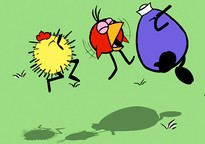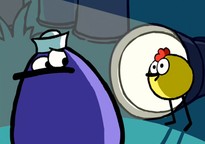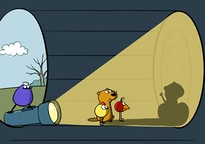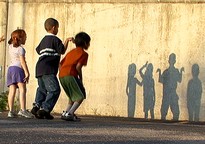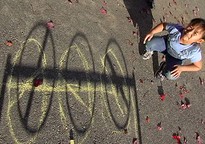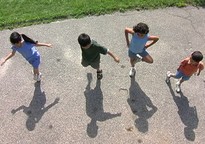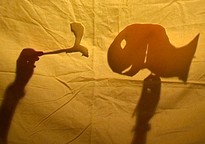Curriculum Overview
In this three-week curriculum, children explore the science of shadows:
Week 1: Outdoor Shadows
Discover shadows made with the sun’s light.
Week 2: Indoor Shadows
Explore and create shadows indoors using lamps
and flashlights.
Week 3: Shadow Theater
Use shadows to create characters and tell a story.
Note: Most of Week 1 activities take place outside; most of Week 2 activities take place inside. If it’s raining or too cloudy outside, you can substitute some of the outdoor activities with indoor activities.
Roughly one to two hours (70–110 minutes) of science exploration is offered throughout a day. The day is broken into four segments:
Morning Circle (25–35 min.)
Read a story or watch a PEEP video (15–20 min.).
Then do a short, hands-on activity (10–15 min.).
Learning Centers (15–30 min.)
Give children time for free exploration at 4–6
different learning centers.
Guided Activity (20–30 min.)
Guide children through a longer, hands-on activity.
Closing Circle (10–15 min.)
Get together and share the day’s discoveries.

 Español
Español




